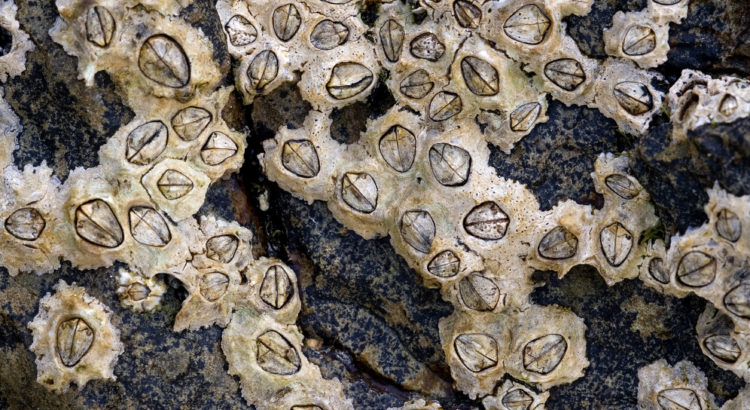By: Kim Snyder, Interpretive Ranger for Southern Region Parks
At the coast, sea life exists in a constant ebb and flow of water. The changing tides create dynamic habitats and specialized conditions that make living there a challenge for those not adapted to the area. In her guide to the seashore; The Edge of the Sea, scientist Rachel Carson wrote:
“…the tides shape the nature and behavior of [sea]life…in all the intertidal area the pulse of life is adjusted to the rhythm of the tides.”
New Hampshire possesses rocky, intertidal shores and is home to many of the iconic creatures of the beach. Let’s take a journey through the hidden zones of the ocean, meet the incredible critters who rough it there every day, and see some of the adjustments they’ve made to live in the tidal rhythm.
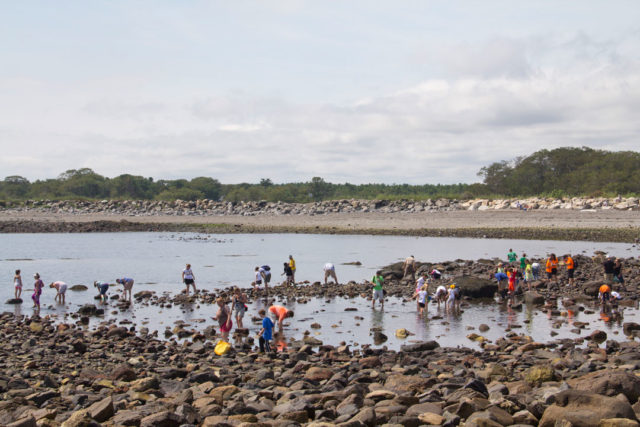
Splash Zone
As its name suggests, the splash zone is regularly doused in splashes from waves. During high tides, incoming waves wet the rocks here infrequently. The occasional periwinkle snail crawls across this landscape, seeking out the salty spray of the waves and the promise of grazing on the blue-green algae and marine lichens that defiantly grow on these rocks.
Gulls and cormorants may perch on these rocks, resting from flight or gazing under the water for their next meal.
At low tide, you can tell where the splash zone ends and the ocean begins by the ring of calcareous white barnacles clinging like teeth to the underbelly and sides of the rocks. This marks the high-tide line and the beginning of the intertidal zone.
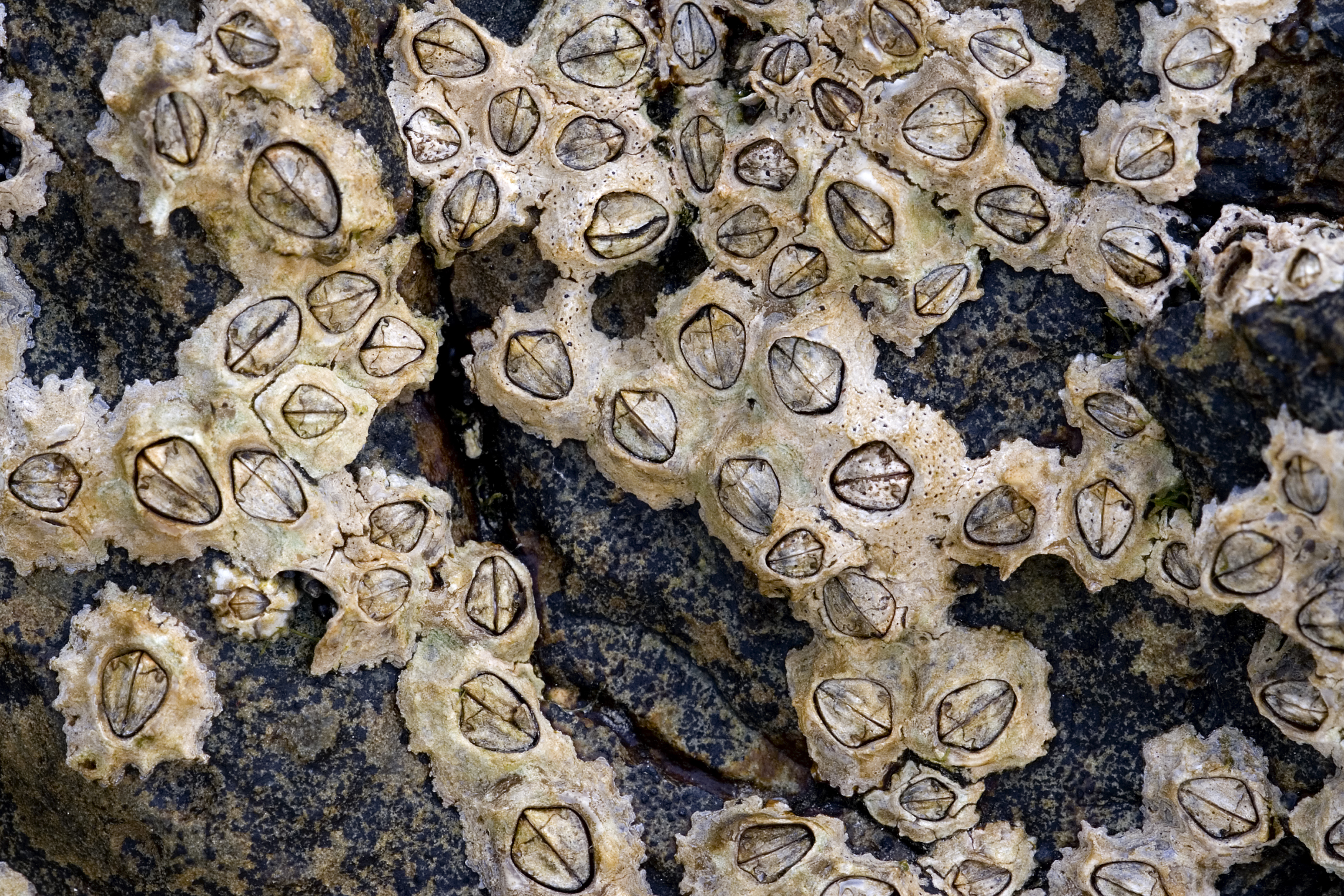
Intertidal Zone
You must like waves to make your home in the intertidal. You must also enjoy a lot of sunshine. Smack in the middle of the rocks, the intertidal experiences daily dynamic change that would leave most sea life shocked and parched. Twice a day it is flooded with seawater and twice a day, it is left high and dry except in small pockets in the rocks where water collects and pools.
Even with all these challenges, many species make their home in these thin bands of space. The barnacles glue themselves to every available space, closed tightly during low tides. Blue mussels crowd in around them, attaching short but strong byssal threads to the rock to hold fast during the changing tides. Just below this band of mussel and barnacle, a thick, damp mat of rockweek blankets everything.
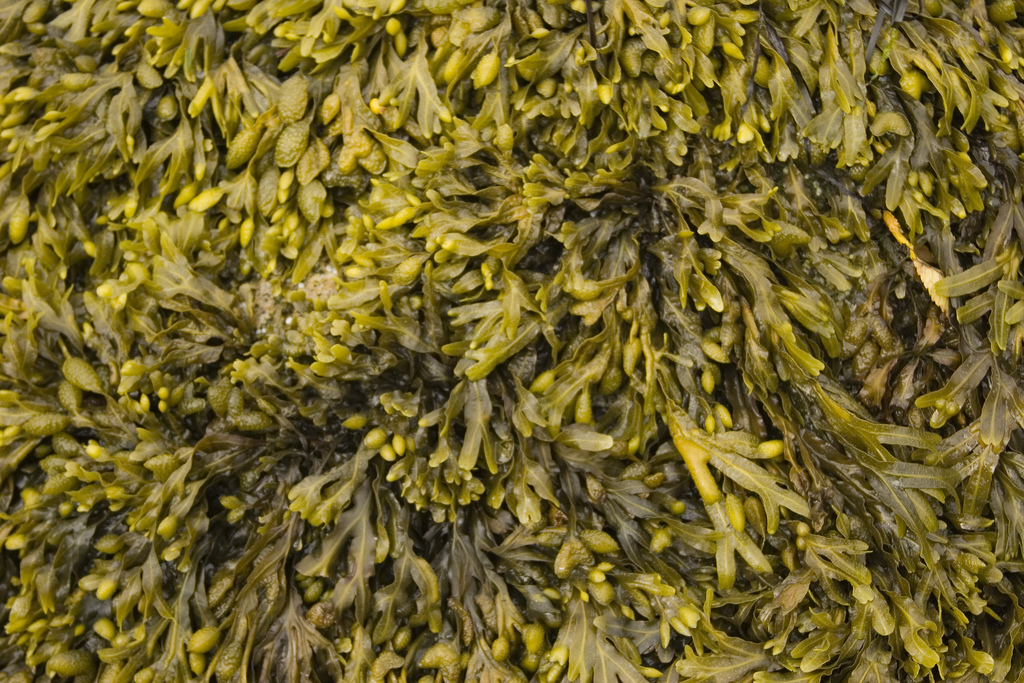
When the water returns, this zone comes alive.
Rockweeds float on the incoming tide, waving gently back and forth. They expose the snails, crabs, and small lobsters that spent the low tide under the wet fronds, keeping cool and moist. Barnacles and mussels open their shells, allowing water to enter their bodies and act as their circulation system to carry food particles into their stomachs and waste out.
Life here is a constant struggle to stay wet and stay alive as predation may come from above by gulls, within by crab or lobster or below.
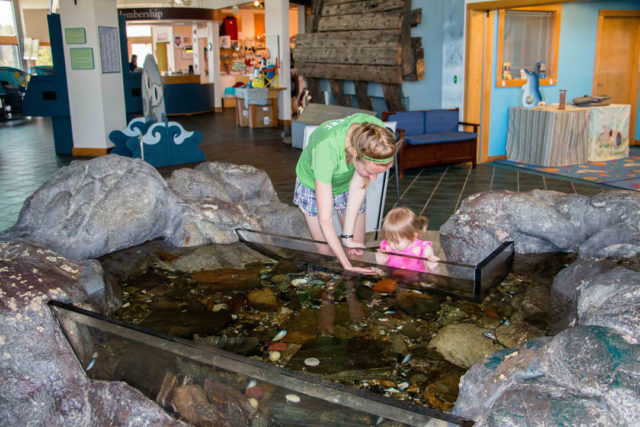
Subtidal Zone
The subtidal zone is the lowest and most stable of the three; only being exposed at very low tides and otherwise remaining under a foot or more of water.
This zone is home to the species that are less tolerant of long stretches outside of the water. Greenish-brown kelp moves with the waves, only fully upright at high tides. Starfish and moon snails crawl along the rocks and sand, seeking out prey. When a starfish encounters a mussel, it wraps its entire body around it, pries the mussel open and inverts its stomach inside the shell, dissolving the contents and absorbing them.
Moon snails are large and slow-moving, burrowing under the sand in search of clams and scallops. When they do find a meal, they wrap their fleshy foot around it and drill a hole into the shell with their tongue. The tongue also acts as a straw to help them suck out the flesh of the shelled creature they find.
You are unlikely to find these creatures unless you venture into the surf at low tide with a keen eye and a snorkel. At very low tides (neap tides) some starfish may be visible clinging to the rocks.
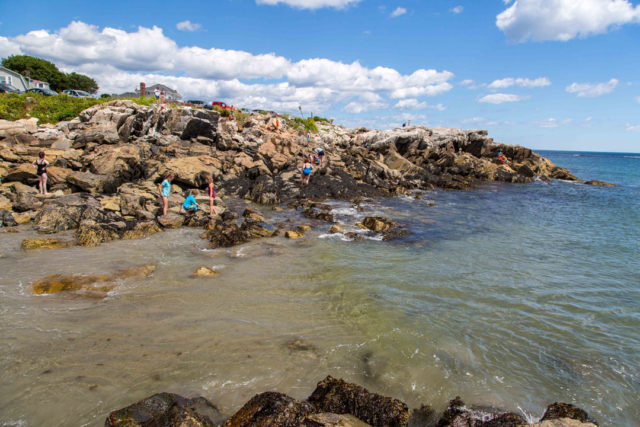
Tidepools can be found all along New Hampshire’s coast: at Odiorne Point State Park near the Seacoast Science Center and along the jetties and rocks at South Hampton and Wallis Sands State Beaches. When visiting the tidepools, please be courteous of the creatures who call it home. Tread lightly and never take creatures with you. Be safe on slippery rocks and enjoy the natural beauty of the edge of the sea.

